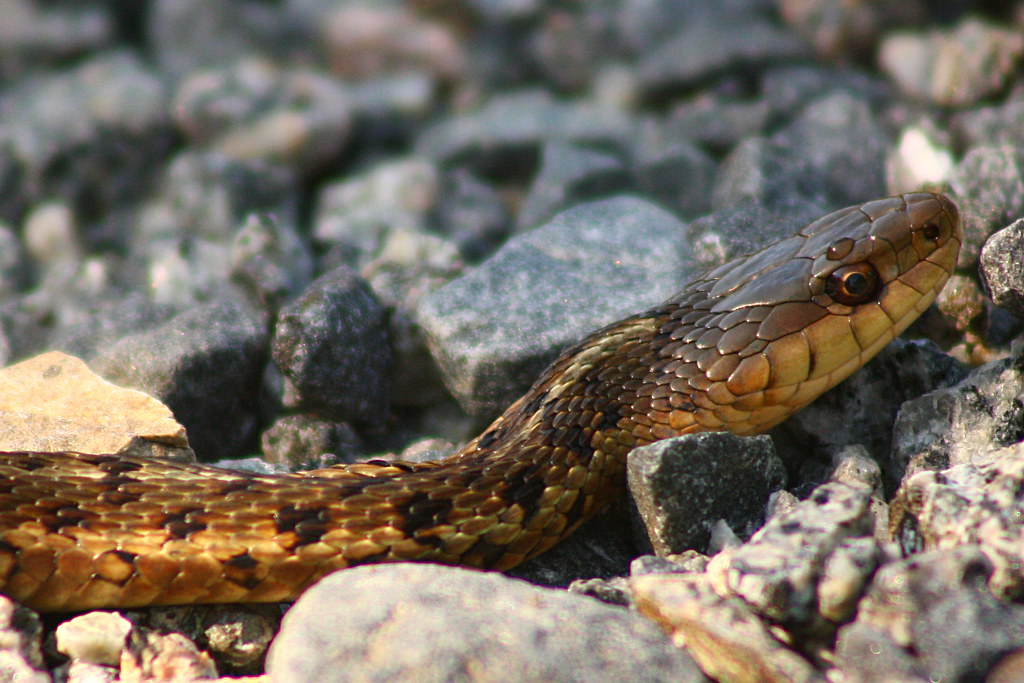#WorldSnakeDay: Cold-blooded killers, yes – but new research reveals a maternal side
16 July 2019
Humans have feared snakes since time immemorial, but scientists now know that even these cold-blooded arch predators have maternal instincts.
There are over 3,000 known species of snake, and they are found in every country apart from Antarctica, Iceland, Ireland, Greenland, and New Zealand.
About 600 species of snake are venomous, and of those about 200 are able to kill or significantly hurt a human being.
While snakes are often feared by humans, this is generally unnecessary, as only 7 per cent of snake species can harm humans.
It is true however that snakes are supreme predators. They kill their prey with venom, by swallowing them alive, or by constricting them to death. Most swallow their food whole, and their prey can be up to three times larger than the width of their head, as they can unhinge their lower jaw.
When hunting, snakes use their forked tongues to smell the air. They flick their tongue in different directions to detect danger and food. They can also detect prey through openings in front of their eyes, called pit holes, which sense heat from warm-blooded animals. The bones in their jaws can also pick up vibrations from nearby scurrying prey.
But while they are undoubtedly ruthless animals, snakes must also engage in reproduction. The majority of snake species lay eggs, and this was once thought to be the end of their parenting responsibility. However, several species of snakes have now been observed exhibiting parental care for their eggs and their young.
Lots of species of snakes will stay with their eggs for the first few days to increase their survivability. But scientists, have also observed snakes defending and caring for their young after hatching suggesting snakes are more complex than humans often believe.
Researchers in the Arizona State University observed rattlesnakes performing defensive behaviours after their eggs had hatched, but not before. They even observed an adult snake deterring a baby from exposing themselves to a human predator, even though the adult was not the baby’s mother. Mothers were also seen to stay close to their young as they first began to explore their surroundings while male rattlesnakes were seen attending the young at nests.
These behaviours are a direct contrast to what was initially expected, as snakes were generally not thought to exhibit any maternal care or responsibility. The help from the unrelated snake may also be the reason why rattlesnakes tend to spend more time in groups, as they can benefit from helping one another.
Southern African pythons are also known to be excellent mothers. Typically up to five metres in length, these huge snakes show caring qualities when it comes to their young. A researcher in Johannesburg studied these pythons for seven years and found they were capable of surprising maternal care.
The southern African python lays around 45 eggs, and when they hatch, the babies are often timid, staying in their eggs for up to two days, while their mother continues to coil protectively around them. If a human approaches, the mother will dart towards her hole, and will exhibit aggressive behaviour towards the threat.
Snakes are hard to study in the wild as their nests are hard to find. But these new findings demonstrate how amazing snakes are, and defy preconceptions that they are unfeeling, automatic beings. Maternal care highlights how complex their lives are, and these observations may be just the tip of the iceberg when it comes to the abilities and emotional lives of snakes.
However, as incredible as snakes are, they are not usually suitable pets. Many of the snakes in the pet industry will have been taken from the wild, subjected to long periods of transportation and cramped housing, before being sold as pets. Then, due to common misconceptions regarding the needs of snakes and their capacity to suffer, pet snakes often live in grossly inadequate conditions far removed from their wild environments.
It’s much better for snakes to remain in the wild where they play a vital role in natural ecosystem as both predator and prey.
They not only keep prey numbers down to appropriate levels, but they are also a valuable food source for other animals. Their presence in an area is an indication that it is a healthy and productive ecosystem. In fact, snakes are more helpful than harmful. Snakes eat carriers of many diseases, and so actually reduce the risk of diseases spreading.
BACK







